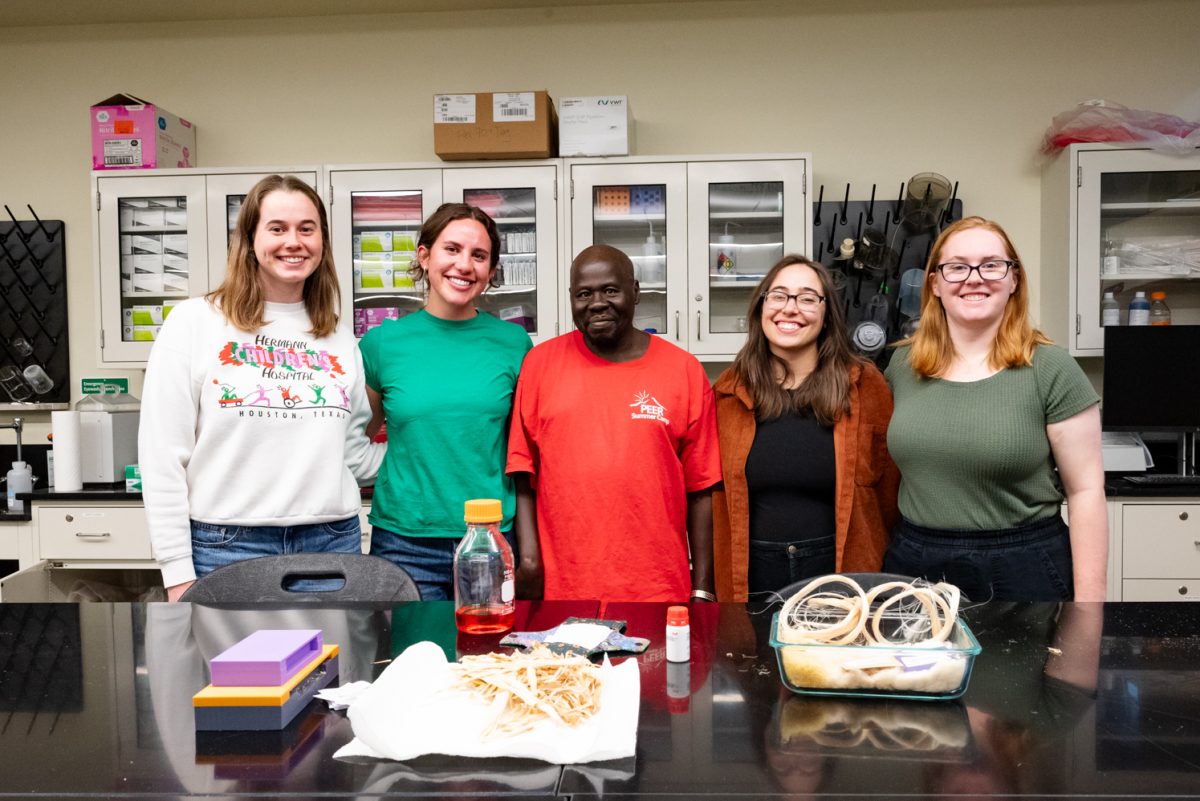Brewing beer at home is a perfect DIY science experiment. The steps are as easy as following a recipe and provide an opportunity to explore basic concepts in molecular biology and chemistry. Read on for a beginner’s homebrewing protocol, and stay for the science.
Humans have been brewing beer for thousands of years. Throughout most of history, brewers had to make do without all of the fancy equipment in breweries today. With just a few raw ingredients and a lot of experimentation, civilizations all around the world crafted their own versions of this iconic beverage. With a little bit of preparation, you can too.
Jeff Biegert, a New Belgium Brewing-sponsored instructor and brewmaster in the fermentation science and technology program at Colorado State University, shared his beer brewing knowledge.
Here’s the gist of it: Yeast is a living microorganism that plays an important role in both baking and brewing. Because it is a living organism, yeast needs food and water to survive. The specific type of yeast used in brewing is called Saccharomyces cerevisiae, and it feeds on sugar while producing alcohol as a byproduct, Biegert said.
To harness the alcohol-producing powers of yeast, brewers aim to create the perfect conditions for yeast to thrive. They start with a grain — most commonly malted barley — which contains a lot of complex carbohydrates called starches. Starches are made up of long chains of glucose molecules, a type of sugar that yeast loves to feed on.
To make these sugars available, the starches first need to be broken down into smaller pieces. This is the job of proteins called enzymes that act as molecular scissors, chopping complex compounds into smaller pieces, Biegert said.
The enzymes found naturally in barley are called amylases, and they become active at high temperatures, Biegert said. Brewers boil the malted barley to extract the flavors and activate the enzymes, which then break down the starches into simple sugars.
This creates a sweet, grain-infused mixture known as wort. Wort is essentially an all-you-can-eat buffet for the yeast, and this is where the fermentation process begins. When yeast is added to the wort, it digests the sugars and produces alcohol and carbon dioxide, Biegert said.
The last key ingredient is hops, which Biegert described as “the spice of beer.” This herb is the key to the characteristic flavors and aromas of beer, and there are many different varieties. Hops are usually added to the wort during the boiling stage before the yeast is added.
These basic principles are all you need to know to start home brewing, though the process can quickly become much more technical for those who are interested, Biegert said.
“Once you have the basic steps down, there are plenty of ways to get creative.”
For an absolute beginner, Biegert said, it can be as easy as this: Boil some water and pre-hopped malt extract in a big pot to create the wort, cool it down and transfer to a fermenting jug, then sprinkle in some yeast and let it ferment for five to seven days.
To step it up a notch, consider using whole-grain barley and raw hops instead of a pre-packaged extract, Biegert said. You can boost your beer’s carbonation by adding extra sugar just before bottling and letting it sit for one to two weeks. This additional time under pressure encourages further fermentation and carbon dioxide production.
For greater control of the end result, you can buy a hydrometer to measure the density of the liquid and calculate the alcohol percentage, Biegert said. In a similar vein, using a pH meter and a thermometer can help fine-tune the conditions for the best results.
It’s also essential to sanitize all of your equipment; otherwise it can become a breeding ground for all sorts of undesirable microorganisms, Biegert said. These can ruin the flavor of the beer and potentially make it unsafe to consume.
Like any other experiment, home brewing is a process of trial and error. The more you practice, the easier it will be to get good results. Once you have the basic steps down, there are plenty of ways to get creative and put your own spin on it, like adding different fruits or spices.
“Early on, I remember making a beer, and I added a bunch of blueberries to it; … it didn’t come out that well,” Biegert said. “But that’s part of this thing. From the failures you have, you’ve learned stuff, right? So there’s always ways to tweak it and improve it if you’re somebody who likes to play around and problem-solve.”
Homebrewing can appeal to anyone, Biegert said — from home cooks who love experimenting in the kitchen to inquisitive scientists and, of course, beer enthusiasts. Even those who aren’t fond of beer might still find joy in exploring its microbiology, participating in the creative process and sharing the experience with others.
If you’re ready to give it a try, start by gathering your materials. The main pieces of equipment you’ll need are a large stockpot, a carboy jug with an airlock, some clean bottles and a siphon hose. You’ll also need a sanitizing solution like iodophor or Star San to ensure your equipment is sterile.
The three most essential ingredients are brewing yeast, malt extract and hops. To simplify things even further, you can buy a hopped malt extract, which already includes the hops.
These supplies can easily be ordered online or bought from a local home-brew shop like Brew Fort. If you want to get slightly more advanced and ensure the best results, you should also buy a simple thermometer, a bottle capper and a hydrometer.
For a slightly higher price point — but less fuss — you can buy a home-brew kit that comes with everything you need. These can be found online for around $100.
Recipe courtesy of Jeff Biegert:
Essential equipment:
- 5-gallon (20 quart) stainless steel stockpot
- 5-gallon carboy jug with airlock — ideally glass, but plastic will do in a pinch — or a food-safe 5-gallon plastic bucket
- Siphon hose and siphoning wand
- Cleaned and sanitized 12-ounce bottles
- Bottle capper and crowns/caps
- Alkali cleaner like powdered brewery wash
- Iodine-based sanitizer like iodophor or acid sanitizer such as Star San
More advanced equipment:
- Thermometer
- Hydrometer (to measure liquid density and calculate alcohol concentration)
- pH meter
- Wort chiller
Ingredients:
- 3 pounds hopped malt extract
- 1 packet brewer’s yeast
- 1-2 ounces hops of your choice (optional, but adds flavor to the beer)
Procedure:
- Clean and sanitize all equipment before using.
- Follow directions on pre-hopped malt extract and fill the stockpot with the required amount of cold water. Bring to a boil.
- Add the malt extract and hops (if using). Stir, and let boil for 20 minutes.
- Cool the wort mixture down to around 65-70 degrees Fahrenheit. It is best to do this quickly using an ice bath. At temperatures higher than 80 degrees, the yeast will not survive, which will ruin the batch.
- Transfer the wort to the carboy jug, and sprinkle in the yeast. Secure the carboy with the airlock. This allows small amounts of air to escape while keeping the carboy sealed, as too much gas buildup can cause the carboy to explode.
- Allow fermentation to take place for five to seven days or more, at least until there is no visible activity or two days after beer reaches expected terminal gravity as measured with a hydrometer.
- Using the siphon hose, transfer the beer into a food-safe 5-gallon bucket. Mix in priming sugar (dextrose or sucrose, typically ¾ cup per 5 gallons of beer). Then siphon with bottle-filling wand into clean, sanitized bottles. Leave for two to three weeks at room temperature to carbonate.
- Enjoy your fresh batch of home-brewed beer!
Additional resources:
Reach Lizzy Rylance at science@collegian.com or on Twitter @CSUCollegian.










